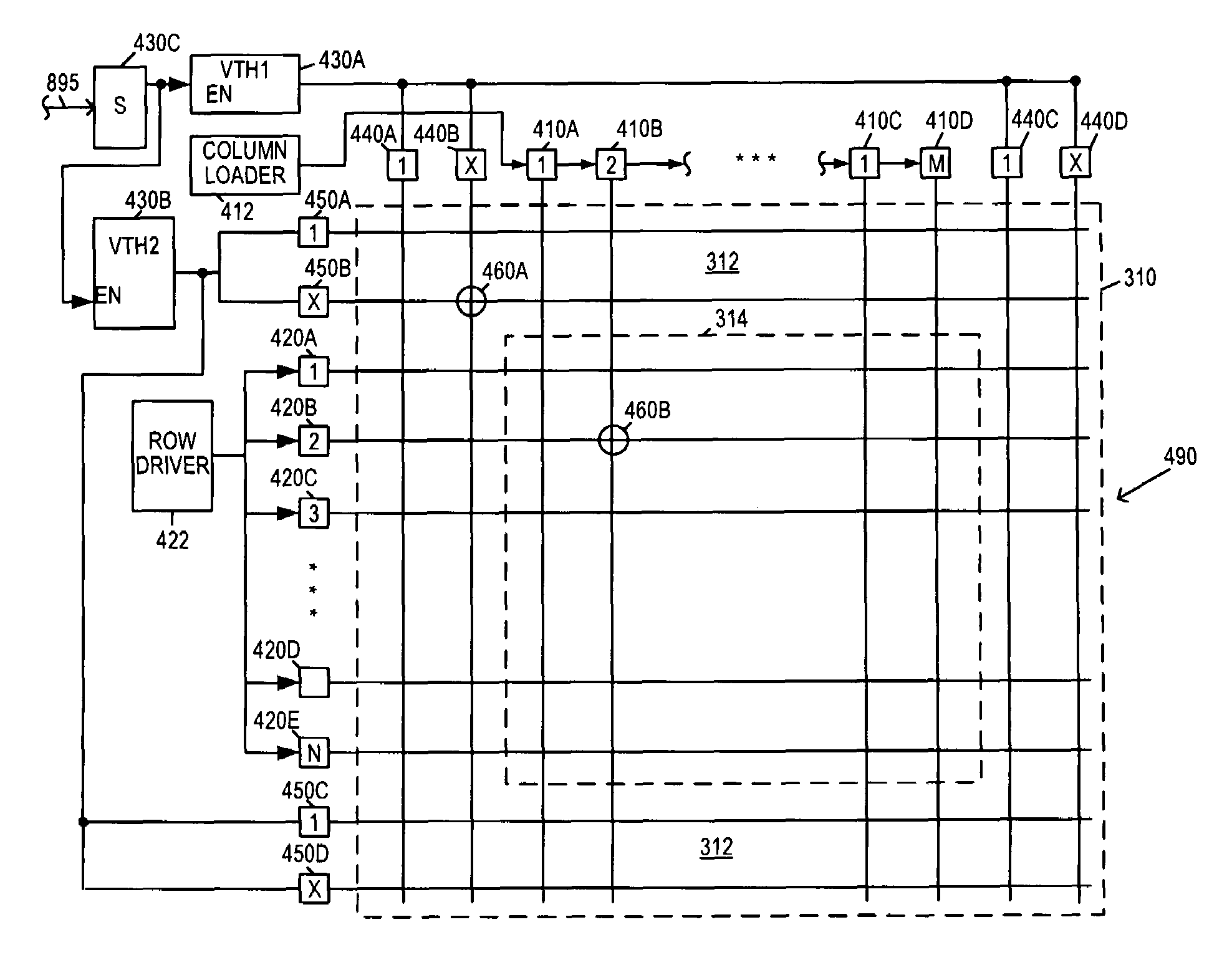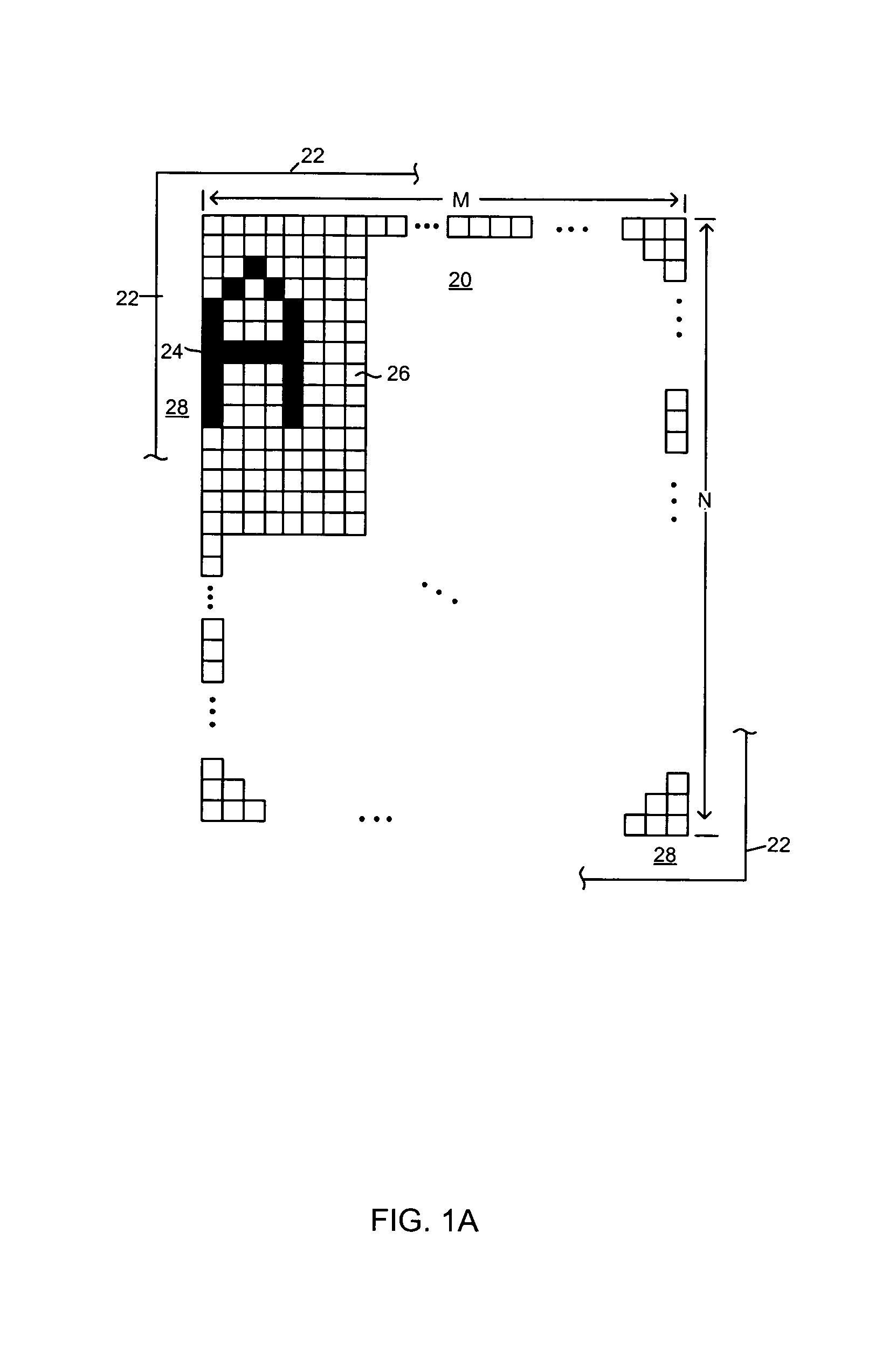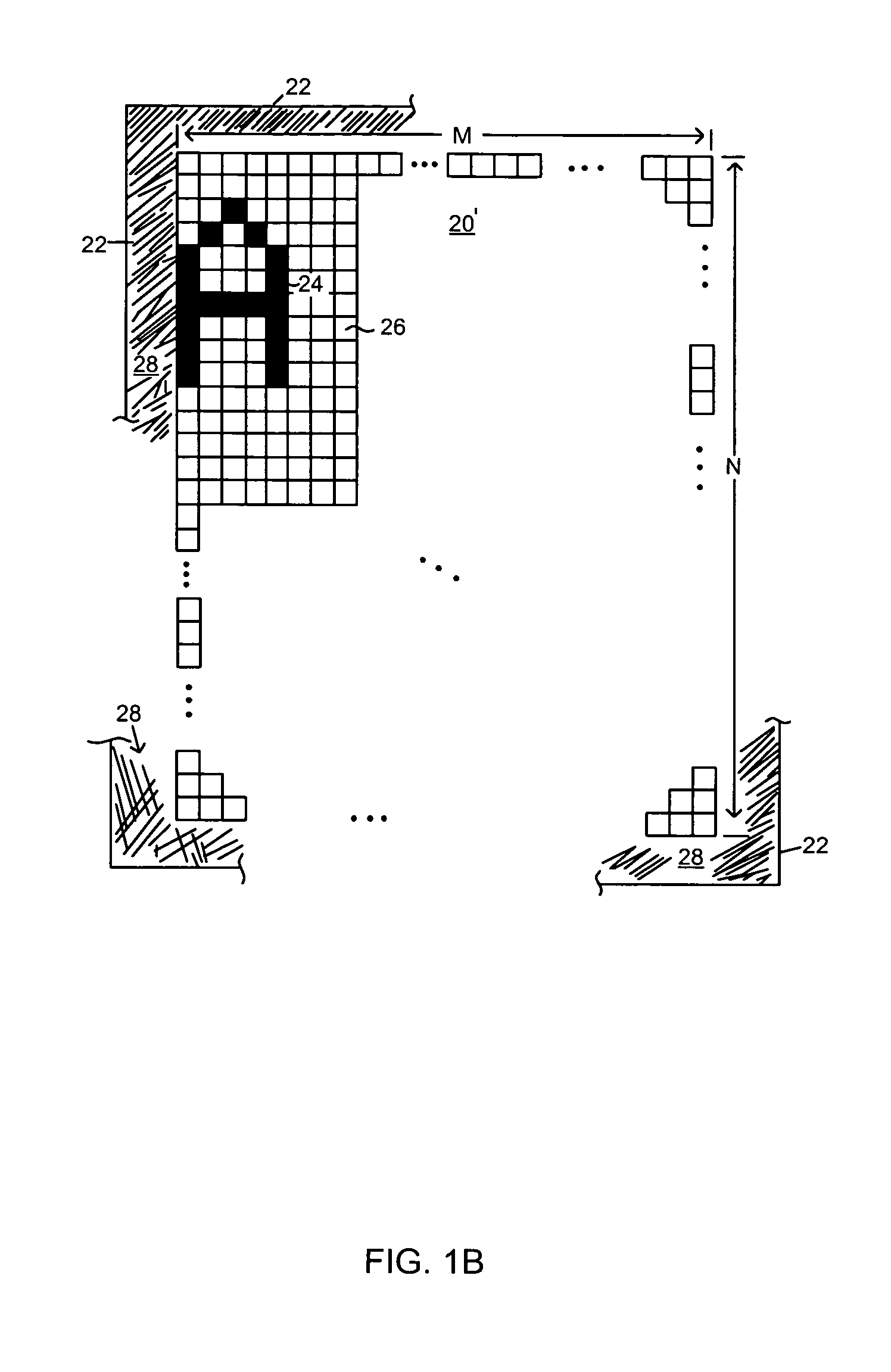Controllable pixel border for a negative mode passive matrix display device
a passive matrix display device and controllable pixel border technology, applied in the field of flat panel display screen technology, can solve the problems of inacceptable solution and difficult reading of edge displayed characters by users, and achieve the effect of improving viewability and maximising the use of screen pixels
- Summary
- Abstract
- Description
- Claims
- Application Information
AI Technical Summary
Benefits of technology
Problems solved by technology
Method used
Image
Examples
Embodiment Construction
[0035]In the following detailed description of the present invention, a controllable pixel border for a negative display mode passive matrix display screen which provides contrast improvement for increased viewability of edge-displayed characters, numerous specific details are set forth in order to provide a thorough understanding of the present invention. However, it will be recognized by one skilled in the art that the present invention may be practiced without these specific details or with equivalents thereof. In other instances, well known methods, procedures, components, and circuits have not been described in detail as not to unnecessarily obscure aspects of the present invention.
[0036]The following co-pending application is hereby incorporated by reference, Ser. No. 09 / 709,142, by Canova, et al., entitled “Pixel Border for Improved Viewability of a Display Device,” filed Nov. 8, 2000 and assigned to the assignee of the present invention.
Exemplary Portable Electronic Device P...
PUM
 Login to View More
Login to View More Abstract
Description
Claims
Application Information
 Login to View More
Login to View More - R&D
- Intellectual Property
- Life Sciences
- Materials
- Tech Scout
- Unparalleled Data Quality
- Higher Quality Content
- 60% Fewer Hallucinations
Browse by: Latest US Patents, China's latest patents, Technical Efficacy Thesaurus, Application Domain, Technology Topic, Popular Technical Reports.
© 2025 PatSnap. All rights reserved.Legal|Privacy policy|Modern Slavery Act Transparency Statement|Sitemap|About US| Contact US: help@patsnap.com



